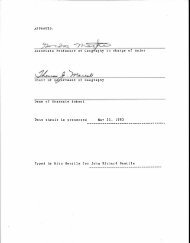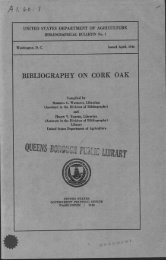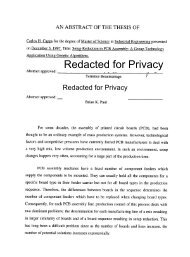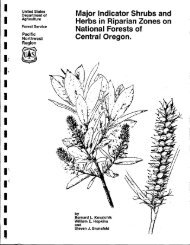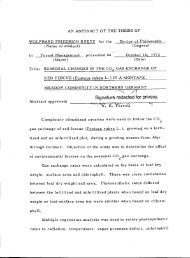In vitro anaerobic trinitrotoluene (TNT) degradation with rumen fluid ...
In vitro anaerobic trinitrotoluene (TNT) degradation with rumen fluid ...
In vitro anaerobic trinitrotoluene (TNT) degradation with rumen fluid ...
You also want an ePaper? Increase the reach of your titles
YUMPU automatically turns print PDFs into web optimized ePapers that Google loves.
draw advantage from <strong>anaerobic</strong> conditions, isolation of the specific microorganism<br />
that is responsible for <strong>TNT</strong> transformation should be conducted.<br />
For both <strong>anaerobic</strong> and aerobic conditions, the analytical methods used for<br />
most <strong>TNT</strong> transformation intermediates have been well developed (29), but their<br />
utility for the further reduction of TAT products under <strong>anaerobic</strong> conditions and of the<br />
oxidation of <strong>TNT</strong> to CO2 under aerobic conditions remains in issue, leaving evidence<br />
that these processes are more polar than their parent compounds.<br />
1.6 Statement of purpose<br />
Based upon the previous results of <strong>TNT</strong> bio<strong>degradation</strong>, <strong>TNT</strong> transformations<br />
<strong>with</strong> ruminal microorganisms and an isolate, G.8, are investigated. This study is<br />
directed to: 1) identify pathways of <strong>TNT</strong> transformation <strong>with</strong> incubation of <strong>rumen</strong><br />
<strong>fluid</strong>.; 2) explore the feasibility of using ruminal microorganisms for the<br />
decontamination of <strong>TNT</strong> contaminated soil; 3) isolate a pure culture to avoid<br />
complexities of <strong>rumen</strong> contents matrix; 4) determine <strong>TNT</strong> transformation pathways by<br />
the isolate.; 4) investigate the effects of the different energy sources (i.e. lactate,<br />
acetate and formate as electron donor; nitrate, nitrite and absence of primary electron<br />
acceptor) on <strong>TNT</strong> transformations in a batch and continuous flow bioreactor.<br />
15





